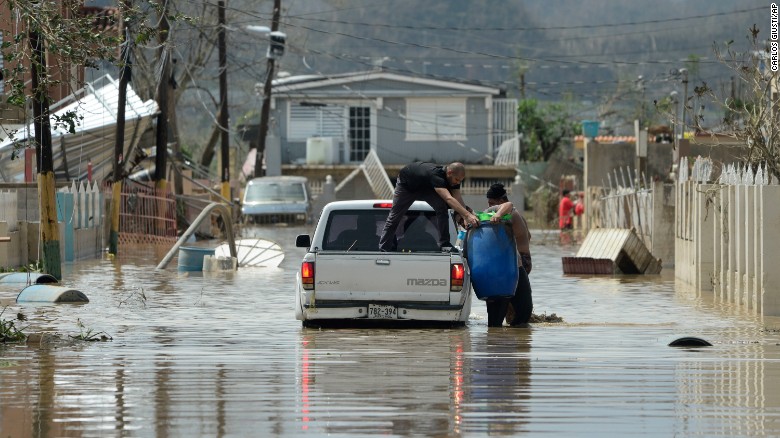Hope for Puerto Rico?
September 28, 2017 | Expert Insights

The aftermath of Hurricane Maria has left Puerto Rico dealing with widespread damage and devastation.
There have been at least 24 deaths and millions in the region have been living without electricity and access to basic food and water.
Background
Hurricane Maria is the second Category 5 hurricane of the 2017 Atlantic hurricane season. It formed out of a tropical wave on September 14th, 2017. This will be the third hurricane to hit the Leeward Islands this season. It made landfall on Dominica as a Category 5 hurricane. It is slated to hit Leeward Islands, Puerto Rico, and the Dominican Republic. This is the strongest hurricane in 85 years to hit the US territory of Puerto Rico.
As of September 25, the hurricane has caused at least 59 deaths. This includes 27 deaths in Dominica, 2 in Dominican Republic, 2 in Guadeloupe, 3 in Haiti, 24 in Puerto Rico, and 1 in the United States Virgin Islands.
Maria has now been downgraded to a tropical storm. It has maximum winds of 70 mph. A warning has been posted in North Carolina-Virginia state line, including the Albemarle and Pamlico sounds.
Analysis
Puerto Rico has been considerably damaged by the hurricane. Carlos Mercader, a spokesman for Puerto Rico’s governor said, “Devastation – it’s everywhere. It’s total devastation. Now that the sun has come up, it is the time to assess all of the damages.” Authorities have revealed the damage is so potent that Puerto Rico might be out of power for months.
There are more than 3.5 million Puerto Ricans who are stuck in the region. According to authorities, the area will not get electricity for weeks. Hospitals are falling short of resources to treat thousands of patients and much of the population does not have access to drinking water. Currently, there are 700 Federal Emergency Management Agency (Fema) staff in the island and there are a total of 10,000 federal workers in the area. The teams are still conducting search and rescue missions. At times, they are struggling to provide basic food and water to the population. According to media reports, the population is eating food from hacked coconuts and drinking water from mountain streams. The airports witness lines that last for hours and there’s a shortage of fuel.
In addition, tens of thousands of Puerto Ricans have been displaced as a result of Hurricane Maria and are living in shelters. US President Donald Trump has been criticized for not speaking about the event (Puerto Rico is a US territory) for five days after the hurricane hit the region. In addition, the White House has refused to waive federal restrictions on foreign ships supplies to Puerto Rico. Trump had made the waiver for Houston and Florida, who had also been hit by powerful hurricanes in the recent weeks.
The US President has announced that he will be visiting the region on October 2nd, 2017. He has also assured the public that the government is sending across supplies to Puerto Rico.
Assessment
Our assessment is that it will cost more than $40 billion to fix the damage that has been caused in Puerto Rico. However, the need of the hour is sending across basic lifesaving supplies to those stuck in the island. The US government has the responsibility to send across the necessary aid to save those in danger.
Read more:








Comments